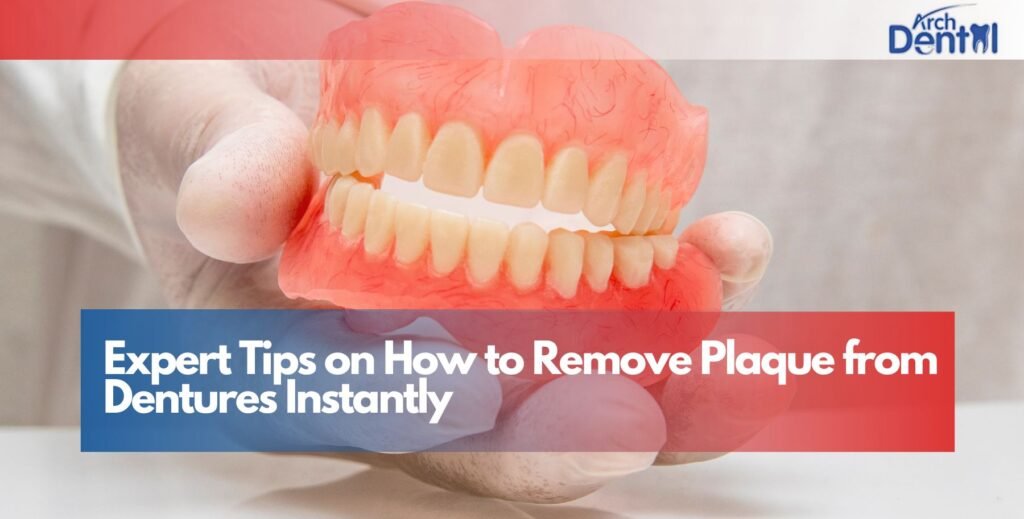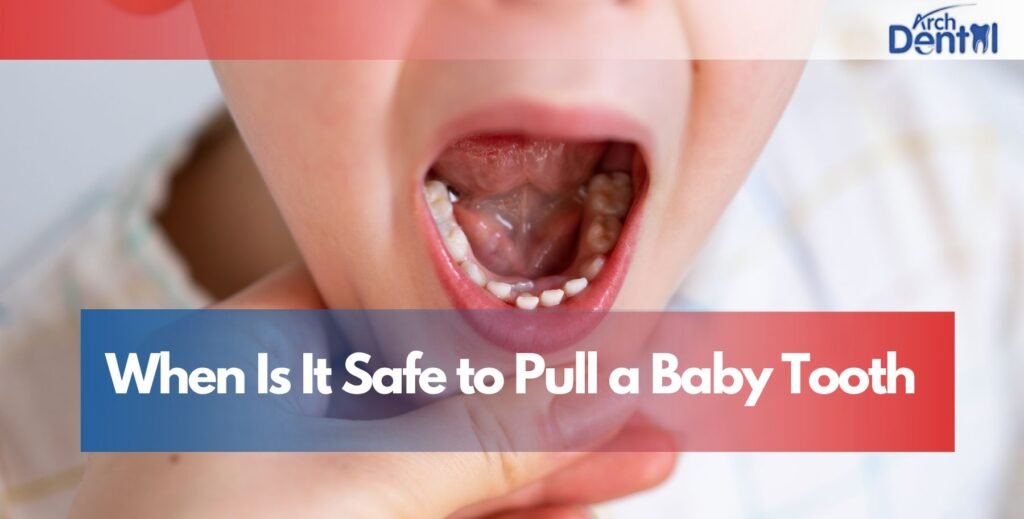Plaque might sound harmless, but this sticky film of bacteria is the main culprit behind tooth decay, gum disease, and bad breath. It’s something everyone deals with daily — even those with good oral hygiene. Understanding how plaque forms and learning how to effectively remove it is key to keeping your teeth strong and healthy for life.
In this detailed guide, we’ll walk you through everything you need to know about how to remove plaque from teeth, why it forms, how to prevent it, and when to see a dentist for professional help.
What Is Plaque and Why Does It Form?
Plaque is a soft, sticky layer that builds up on your teeth after eating or drinking. It’s made up of food particles, saliva, and bacteria that naturally live in your mouth.
When you eat foods rich in sugar or carbohydrates, these bacteria feed on them and produce acids. Over time, these acids can weaken your enamel, leading to cavities, gum inflammation, and tartar buildup if not removed properly.
How Plaque Develops
- You eat or drink sugary foods.
- Bacteria in your mouth feed on sugars, releasing acid.
- These acids mix with saliva and food debris.
- The mixture sticks to teeth as plaque.
When plaque isn’t cleaned regularly, it hardens into tartar (calculus) — a tough, yellowish deposit that only a dentist can remove.
Why Is It Important to Remove Plaque from Teeth?
Plaque might start off soft, but it can quickly cause serious oral problems if left untreated. Removing it daily keeps your smile clean and prevents long-term dental issues.
Effects of Plaque on Oral Health
- Cavities: Acids from plaque erode enamel, causing decay.
- Gingivitis: The first stage of gum disease, marked by bleeding or swollen gums.
- Tartar Buildup: Hardened plaque that traps more bacteria.
- Bad Breath: Bacteria release foul-smelling compounds.
- Tooth Loss: Advanced gum disease can weaken tooth support.
A consistent cleaning routine can prevent all of these problems and the best part is, it’s simple to follow.
Daily Habits to Remove Plaque Effectively
Brushing and flossing may sound basic, but doing them the right way makes all the difference in controlling plaque.
Brush Twice a Day with the Right Technique
Brushing removes plaque before it hardens. But technique matters just as much as frequency.
How to Brush Properly
- Use a soft-bristled toothbrush to avoid gum irritation.
- Hold the brush at a 45-degree angle to your gums.
- Move in gentle circular motions, not harsh scrubbing.
- Brush for at least two minutes, covering all tooth surfaces.
- Don’t forget your tongue and gumline, where bacteria often hide.
Replace your toothbrush every three months or sooner if bristles fray.
Choosing the Right Toothpaste
Opt for a fluoride toothpaste, as fluoride strengthens enamel and prevents decay. Some anti-plaque or tartar-control toothpastes can also help reduce bacterial buildup.
Floss Daily to Remove Plaque Between Teeth
Flossing cleans the tight spaces your toothbrush can’t reach. These are the most common areas for plaque buildup and early cavities.
How to Floss Correctly
- Use about 18 inches of floss and wrap it around your fingers.
- Gently slide it between teeth using a sawing motion.
- Curve it into a “C” shape around each tooth and move up and down.
- Don’t snap the floss into your gums — it can cause irritation.
If you struggle with traditional floss, floss picks, interdental brushes, or water flossers can make the process easier and more comfortable.
Use an Antibacterial Mouthwash
Mouthwash helps kill bacteria that cause plaque, especially in hard-to-reach places.
How to Use Mouthwash for Best Results
- Rinse for 30 seconds after brushing and flossing.
- Choose an alcohol-free fluoride mouthwash to avoid dryness.
- Don’t eat or drink for at least 30 minutes after rinsing.
Mouthwash isn’t a replacement for brushing or flossing but adds an extra layer of protection against plaque buildup.
Clean Your Tongue Daily
The tongue harbors millions of bacteria that contribute to plaque and bad breath.
How to Clean the Tongue
- Use a tongue scraper or the back of your toothbrush.
- Start from the back and gently move forward.
- Rinse your mouth after cleaning.
A clean tongue means fewer bacteria circulating around your mouth.
Stay Hydrated Throughout the Day
Water plays a major role in washing away food particles and neutralizing acids.
Best Practices
- Rinse your mouth with water after meals or snacks.
- Drink plenty of water to keep saliva levels healthy.
- Avoid sugary or acidic beverages that promote plaque growth.
Saliva is your body’s natural defense against bacteria — staying hydrated keeps it flowing.
Professional Dental Cleanings: When Plaque Turns to Tartar
Even with perfect home care, some plaque can harden into tartar over time. Once this happens, brushing won’t remove it — only a dentist or hygienist can.
What Happens During a Professional Cleaning
- Scaling: Removes tartar from above and below the gumline.
- Polishing: Smooths the teeth to prevent new plaque buildup.
- Fluoride treatment: Strengthens enamel after cleaning.
Most people need a professional cleaning every six months, but if you’re prone to plaque or gum disease, your dentist may recommend more frequent visits.
How Diet Impacts Plaque Formation
Your diet has a direct effect on how quickly plaque builds up. Sugary and starchy foods fuel bacteria, while certain foods can actually help clean your teeth.
Foods That Promote Plaque
- Sugary snacks and drinks (soda, candy, pastries)
- Sticky foods like dried fruit or caramel
- Starchy items such as chips and bread
Foods That Help Prevent Plaque
- Crunchy fruits and vegetables: Apples, carrots, celery naturally scrub teeth.
- Dairy products: Cheese and yogurt neutralize acids.
- Green tea: Contains polyphenols that reduce bacteria.
- Water: Keeps your mouth hydrated and rinses away debris.
Small changes in your eating habits can make a big difference in plaque control.
Natural Remedies to Reduce Plaque Buildup
While professional care is irreplaceable, some natural approaches can support daily plaque prevention.
Oil Pulling
Swishing coconut or sesame oil for 10–15 minutes helps reduce harmful bacteria and plaque-causing acids.
Baking Soda Brushing
Using baking soda once a week gently polishes teeth and neutralizes acidity. Don’t overuse it, as it can wear down enamel.
Hydrogen Peroxide Rinse
Dilute one part hydrogen peroxide with two parts water. Rinse for 30 seconds to kill bacteria and whiten teeth.
Always check with your dentist before trying home remedies, especially if you have sensitive gums or existing dental work.
Plaque Prevention for Children
Children are especially prone to plaque because of sugary snacks and less effective brushing. Teaching good habits early sets the foundation for lifelong oral health.
Tips for Parents
- Supervise brushing until your child can do it well alone.
- Use fluoride toothpaste (pea-sized amount for ages 3+).
- Encourage healthy snacks like fruit and yogurt instead of sweets.
- Schedule regular dental checkups for professional cleanings.
Healthy habits built early can prevent cavities and gum problems later in life.
Common Mistakes That Lead to Plaque Buildup
Even if you brush every day, small mistakes can make plaque removal less effective.
Brushing Too Hard
Aggressive brushing wears away enamel and irritates gums. Gentle pressure is all you need.
Skipping Flossing
Flossing removes 40% of the plaque your toothbrush can’t reach — skipping it allows bacteria to thrive.
Using the Wrong Toothbrush
A brush that’s too hard or old can damage gums instead of cleaning them. Replace it regularly.
Not Brushing Long Enough
Two minutes may seem long, but anything less leaves plaque behind — especially near the gumline.
Plaque vs. Tartar: What’s the Difference?
Understanding the difference between plaque and tartar helps you know when home care is enough and when to seek professional help.
| Feature | Plaque | Tartar (Calculus) |
| Texture | Soft and sticky | Hard and crusty |
| Color | Colorless or pale yellow | Yellow or brown |
| Can Be Removed At Home? | Yes | No |
| Removal Method | Brushing and flossing | Professional scaling |
Once plaque hardens into tartar, it becomes almost impossible to remove without dental tools.
Advanced Plaque Removal at the Dentist’s Office
When tartar builds up or causes gum inflammation, dentists use specialized procedures to restore gum health.
Scaling and Root Planing
A deep cleaning that removes tartar from below the gumline and smooths root surfaces to prevent bacteria buildup.
Ultrasonic Cleaning
Uses high-frequency vibrations and water to break apart plaque and tartar without damaging teeth.
Laser Cleaning
A modern, less invasive method that removes plaque and bacteria precisely, reducing gum inflammation and healing time.
How Smoking and Vaping Affect Plaque Formation
Tobacco products and vaping both increase plaque accumulation dramatically.
Why?
- Smoking dries out the mouth, reducing saliva.
- It alters bacterial balance, allowing harmful strains to grow.
- Nicotine stains teeth, making plaque more noticeable.
Quitting tobacco and maintaining proper oral hygiene significantly reduce plaque and tartar risk.
When to See a Dentist for Plaque and Tartar Removal
If you notice signs like bleeding gums, persistent bad breath, or yellow buildup near your gumline, it’s time to visit your dentist.
Warning Signs You Shouldn’t Ignore
- Gums that bleed during brushing
- Persistent bad taste or odor
- Tooth sensitivity
- Visible yellow or brown buildup
- Gum recession
Early professional cleaning can reverse gingivitis and prevent periodontal disease.
Long-Term Prevention: How to Keep Plaque Away
Plaque removal isn’t a one-time effort, it’s a daily commitment. Consistency is the key to lasting oral health.
Daily Checklist
- Brush twice a day.
- Floss once daily.
- Use antibacterial mouthwash.
- Eat tooth-friendly foods.
- Visit your dentist twice a year.
The result? A cleaner mouth, fresher breath, and stronger teeth for life.
Conclusion
Plaque is something you can’t avoid but you can absolutely control it. By brushing and flossing correctly, eating a balanced diet, and scheduling regular cleanings, you can protect your teeth from decay and gum disease.
If you’ve noticed plaque buildup or feel your teeth aren’t as clean as they should be, visiting your dentist in Northampton, MA is the best way to restore your oral health and confidence. Professional cleaning combined with good daily habits will keep your smile bright and healthy for years to come.
FAQs
What is the best way to remove plaque from teeth?
Brushing twice a day, flossing daily, and using mouthwash are the best ways to remove plaque. For hardened tartar, visit your dentist for professional cleaning.
How can I remove hardened plaque at home?
You can’t safely remove hardened tartar at home. Use good oral hygiene to prevent it, and schedule regular dental cleanings for removal.
What happens if plaque is not removed?
If left untreated, plaque hardens into tartar, leading to cavities, gum disease, bad breath, and even tooth loss.
Can vinegar or baking soda remove plaque?
While baking soda can help control acidity, it should be used sparingly. Vinegar is not recommended; it’s too acidic and can damage enamel.
How fast does plaque turn into tartar?
Plaque can start hardening into tartar within 24–72 hours if not removed by brushing and flossing.
How do dentists remove plaque and tartar?
Dentists use specialized tools to scale off tartar and polish teeth, restoring a smooth surface that’s harder for plaque to stick to.
Is mouthwash enough to prevent plaque?
Mouthwash helps reduce bacteria but doesn’t replace brushing and flossing. It should be used as a supplement, not a substitute.





